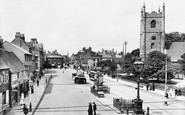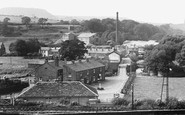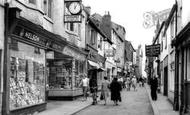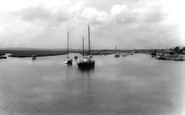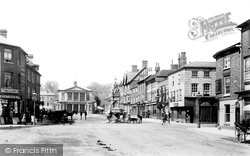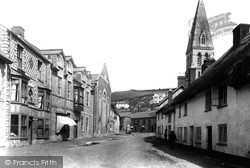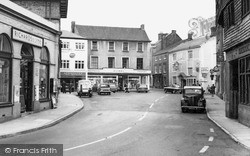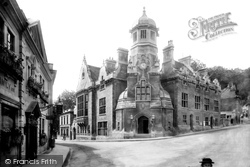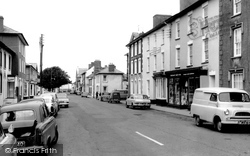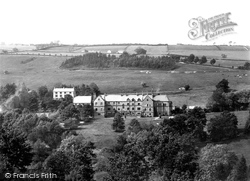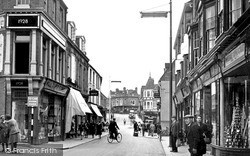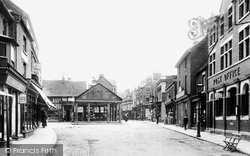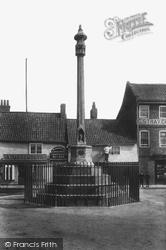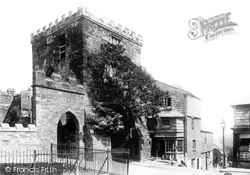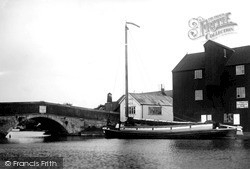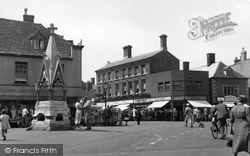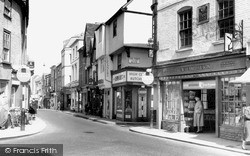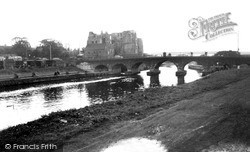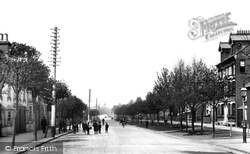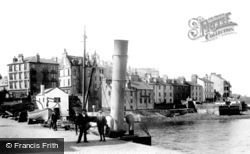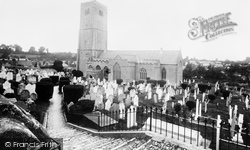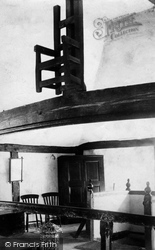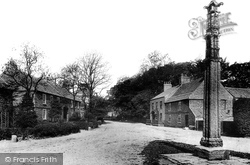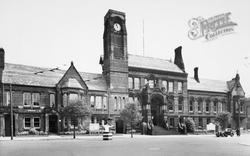Places
26 places found.
Those places high-lighted have photos. All locations may have maps, books and memories.
- Town End, Derbyshire
- Town End, Buckinghamshire
- Town's End, Somerset
- Towns End, Dorset
- Town End, Merseyside
- Town End, Cambridgeshire
- Town's End, Buckinghamshire
- West End Town, Northumberland
- Bolton Town End, Lancashire
- Kearby Town End, Yorkshire
- Town End, Cumbria (near Grange-Over-Sands)
- Town End, Cumbria (near Bowness-On-Windermere)
- Town End, Yorkshire (near Huddersfield)
- Town End, Yorkshire (near Wilberfoss)
- Town End, Cumbria (near Appleby-in-Westmorland)
- Town's End, Dorset (near Melbury Osmond)
- Town's End, Dorset (near Swanage)
- Town End, Cumbria (near Ambleside)
- Town End, Cumbria (near Lakeside)
- Town End, Cumbria (near Kirkby Lonsdale)
- Town End, Cumbria (near Ambleside)
- Town's End, Dorset (near Bere Regis)
- West-end Town, South Glamorgan
- Townend, Derbyshire
- Townend, Strathclyde (near Dumbarton)
- Townend, Staffordshire (near Stone)
Photos
23 photos found. Showing results 2,321 to 23.
Maps
195 maps found.
Books
3 books found. Showing results 2,785 to 3.
Memories
3,719 memories found. Showing results 1,161 to 1,170.
Heber's Ghyll Off Grove Road, Ilkley
We used to live on Grove Road in the 1960s and 1970s and, being a tomboy, I would also go exploring with our two dogs. One of my favourite walks was up Heber's Ghyll - sometimes following the path up through the ...Read more
A memory of Ilkley in 1961 by
Good Times
My parents moved into a prefab in Foxglove Crescent when I was 2. They were still assembling them and German prisoners of war were building the foundations. Compared to my nan's house they had everything, including an electric ...Read more
A memory of South Ockendon in 1945 by
My Home Town 1947 1969
I was born in Liebenrood Road Maternity Hospital Reading in 1947 and for my first 5 years I lived in Salisbury Road, moving to Whitley until I left in 1969. I remember as a young child having many photographs taken at ...Read more
A memory of Reading by
Lumb Mill
Lumb Mill in the 1950s I remember my late mother and father working at this mill in the 1950s. My father worked as a boiler man. As a child I visited the mill during the school holidays also at weekends. I used to join my father ...Read more
A memory of Edenfield in 1954 by
Looking Back
Post house coffee bar (Dilaplos), I lived in there, lunch most dinner times, and back in when the shop closed. I worked in Stylo's, corner of Northgate and Crown Street. Myself and a lad called Frank Uttley(hairdresser) used to get ...Read more
A memory of Darlington in 1965 by
The Sand Park
We lived in 41 Northern Drive, as kids we would play for hours in the sand park. We would watch women working in the Acme tin works, with the big steel presses banging down, making cake tins, cheese graters, kids' tin buckets. No ...Read more
A memory of Collyhurst in 1958 by
The Mission Hall
I was born in Caledonian Buildings on Etterby Road...what a wonderful place it was to play, with all the green grass, trees, and horses, our imaginations would go wild. The best days were when there was a wedding in the Mission ...Read more
A memory of Etterby in 1958 by
Glenboig Amateurs
I have a lot of great memories of when I grew up, Big Billy Campbell a mate for life, Willie Kerr, Alec Fulton now gone but not forgotton and ma wee cous Gerry, we all were brought up in Ramoan, a city in Glenboig, I remember ...Read more
A memory of Glenboig in 1989 by
Strone Youth Hostel
I have fond memories of Strone. My mother was the warden at the SYHA hostel at Strone which was Dunselma on the hill. Strone Primary was my first school. I remember the US floating docks and the protesters ...Read more
A memory of Strone in 1959 by
Caught In A Storm By Christine Swanson
When I was 4 years old I lived on an ex troop carrier which we named the Rembrant (its name was originally the Martello, I think). There was a storm and the moorings gave way and we were adrift at the ...Read more
A memory of South Benfleet in 1940 by
Captions
5,054 captions found. Showing results 2,785 to 2,808.
Timber, stone, corn and malt were transported from here to London by river. Its 18th-century economy depended on the coaching trade; further expansion followed the dawning of the railway age.
The thatch to the right has gone, and so has the church spire; it has a square tower today. Beer had a substantial reputation as a smugglers' base in years gone by.
The tile-hung building to the right of the Square has woodwork elaborately carved with figures, fruit and mythical animals. Constructed as the Court House in 1881, it became a bank, then the library.
The Town Hall was designed in 1855 by the Bath architect Thomas Fuller – he later emigrated to Canada.
It is now home of the main county offices, replacing the ancient capital, Cardigan, and the more recent administrative centre, Aberystwyth.
Behind on the left is a house called Belle Vue, later Whitcliffe Grange, now demolished and replaced by council houses. Beyond is Westfields, one of the town's three medieval open fields.
Mentioned in the Domesday Book and briefly a spa town in the 17th century, Wellingborough was granted market rights by King John in 1201. Cromwell stayed here en route to Naseby during the Civil War.
Northern Shropshire is famous for its cheeses and dairy products, hence the market (or Buttercross) in the picture, which was built in 1824.
Many towns had open-air pools, though few now survive. They went out of fashion; many were closed on health and safety grounds.
Southgate is the only surviving gate of the three that used to give access to the old walled town.
Southgate is the only surviving gate of the three that used to give access to the old walled town.
The bridge joining Wroxham to the west and Hoveton to the east was declared unsafe in the 1960s.
The Market Square is at the busy cross-roads in the centre of this delightful small town.
It looks quiet here now, but once the market at Leominster was so successful that the cities of Hereford and Worcester were jealous of its success.
Newark owes much of its development to the fact that Henry I gave Alexander, Bishop of Lincoln, permission to divert the route of the Fosse Way through the town.
John Ruskin praised this old market town fulsomely, saying it had moorland, sweet river, and English forest at their best. Markets have been held here since medieval times.
We are looking north along the A5, with the Town Hall tower on the grey horizon.
Over to the right is Seaton's Temperance Hotel, one of several in the town.
St Mary's, the parish church of Higher Brixham, was the town's original place of worship, dating back to the 15th century. There are some impressive altar tombs and a font dating back to the 1300s.
St Mary's, the parish church of Higher Brixham, was the town's original place of worship, dating back to the 15th century. There are some impressive altar tombs and a font dating back to the 1300s.
Over to the right is Seaton's temperance hotel, one of several in the town.
Built during the reign of Henry VIII, this tiny town hall is now a listed building. It was also a courtroom and prison.
South of Boroughbridge is the old Roman town of Aldborough - Isurium Brigantum.
The Town Hall opened in 1876, replacing an earlier building that had been destroyed by fire in 1871.
Places (26)
Photos (23)
Memories (3719)
Books (3)
Maps (195)


